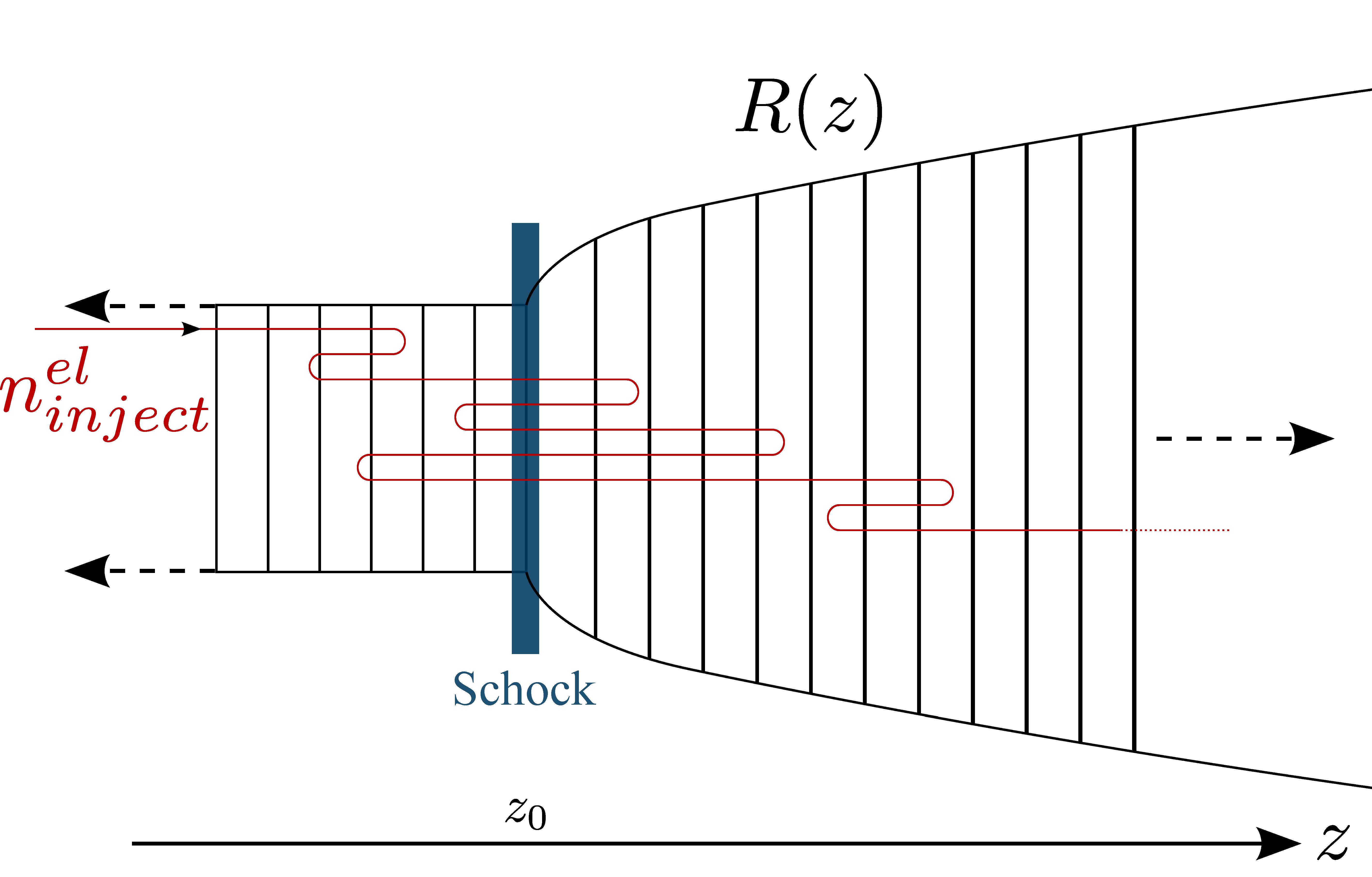AGN modeling with UNICORN
The UNICORN code
Most models for the emission of Active Galactic Nuclei assume an isotropic and homogeneous emission region, mostly only under the assumption that high-energy particles are injected with a fixed power law. Based on experience with two-zone models ( A self-consistent and time-dependent hybrid blazar emission model. Properties and application, Weidinger and Spanier 2015 ) it is advisable to use shock acceleration alongside emission in AGN models.
| UNICORN uses a spatially resolved simulation area in which an AGN jet is divided into disks along its axis. In each disc, a photon population and a forward and a backward electron and proton population are considered. These move along the jet axis by advection. In parallel, a given velocity profile of the background plasma is considered. After a certain time, due to the scattering of this plasma, an equilibrium is established between the particles moving forward and backward. For a shock in the background plasma, there is then a direct Fermi-I acceleration in the model. |  |
Particles are only injected into the simulation area at one point, so the different disks do not each have their own sets of parameters. Only the dimensions of the disks are variable in order to be able to represent different geometries. From this, the distribution of nonthermal particles in the jet and especially around the shock can be displayed consistently.
UNICORN supports a number of different emission processes:
- Synchrotron radiation (elektrons, protons, muons, pions)
- Invers-Compton scattering of electrons
- electronen pair production and annihilation
- Photo-hadronic processes according to Simplified Models for Photohadronic Interactions in Cosmic Accelerators (Hümmer et al. 2010)
UNICORN is parallelized with MPI and OpenMP and supports GPU computing with the OpenCL interface. Data are saved as HDF5 files and can therefore be evaluated universally.
A more detailed description of the model is given in A Numerical Model of Parsec-scale SSC Morphologies and Their Radio Emission ( Richter and Spanier 2016, The Astrophysical Journal) . Scientific results with the UNICORN code are described on the AGN page .
The source code of UNICORN is not freely available. However, it can be passed on for cooperation purposes. If you are interested in using the code, please write an email.
The UNICORN-0D code
UNICORN offers many possibilities through its spatial resolution. In many cases, only a few data points are available when modeling AGN and the goal is usually not to develop a complete model of the source, but only to obtain an approximate set of parameters. The numerical effort of UNICORN is too high for that. UNICORN-0D, on the other hand, contains the modern implementation of radiation processes and parallelization techniques, but otherwise contains the simple source geometry of COJONES ( A self-consistent and time-dependent hybrid blazar emission model. Properties and application, Weidinger and Spanier 2015 )
A first application was the parameter study AGN neutrino flux estimates for a realistic hybrid model (Richter and Spanier 2018, Astroparticle Physics). Here almost 1000 model source spectra were calculated in a short time.
The same applies to UNICORN: The UNICORN source code is not freely available. However, it can be passed on for cooperation purposes. If you are interested in using the code, please write an email.

 Home page
Home page